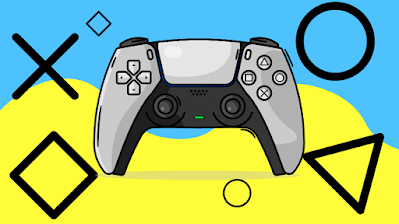Microsoft Windows (History)
Overview
Microsoft Windows generally alluded to like Windows, is a gathering of a few restrictive graphical working framework families, which are all evolved and advertised by Microsoft. Every family obliges a specific area of the figuring business. Dynamic Microsoft Windows families incorporate Windows NT and Windows IoT; these may envelop subfamilies, (for example Windows Server or Windows Embedded Compact) (Windows CE). Ancient Microsoft Windows families incorporate Windows 9x, Windows Mobile, and Windows Phone.
Microsoft presented a working climate named Windows on November 20, 1985, as a graphical working framework shell for MS-DOS because of the developing interest in graphical UIs (GUIs). Microsoft Windows came to overwhelm the world's (PC) market with more than 90% portion of the overall industry, surpassing Mac OS, which had been presented in 1984.
Apple came to consider Windows to be an unjustifiable infringement on their advancement in GUI improvement as carried out on items like the Lisa and Macintosh (in the end got comfortable court in support of Microsoft in 1993). On PCs, Windows is as yet the most famous working framework in all nations. Nonetheless, in 2014, Microsoft conceded losing most of the, generally speaking, working framework market to Android, due to the huge development in deals of Android cell phones. In 2014, the quantity of Windows gadgets sold was under 25% of that of Android gadgets sold. This examination, notwithstanding, may not be completely important, as the two working frameworks customarily target various stages. In any case, numbers for server utilization of Windows (that are tantamount to contenders) show 33% piece of the pie, like that for end-client use.
As of October 2021, the latest form of Windows for PCs and tablets is Windows 11, variant 21H2. The latest adaptation for inserted gadgets is Windows 10, rendition 21H1. The latest adaptation for server PCs is Windows Server 2022, form 21H2. A particular form of Windows likewise runs on the Xbox One and Xbox Series X/S computer game control center.
The First Windows Operating System
The historical backdrop of Windows traces all the way back to 1981 when
Microsoft began work on a program called "Interface Manager". It was reported in November 1983 (after the Apple Lisa, however before the Macintosh) under the name "Windows", yet Windows 1.0 was not delivered until November 1985. Windows 1.0 was to rival Apple's working framework, however, it accomplished little fame. Windows 1.0 is certifiably not a total working framework; rather, it broadens MS-DOS. The shell of Windows 1.0 is a program known as the MS-DOS Executive. Parts included Calculator, Calendar, Cardfile, Clipboard Viewer, Clock, Control Panel, Notepad, Paint, Reversi, Terminal, and Write. Windows 1.0 doesn't permit covering windows. Rather all windows are tiled. Just modular discourse boxes may show up over different windows. Microsoft sold as included Windows Development libraries with the C improvement climate, which incorporated various windows tests.
Some major groundbreaking Versions
-- Windows XP
The following significant form of Windows NT, Windows XP, was delivered on October 25, 2001. The acquaintance of Windows XP pointed with bringing together the purchaser arranged Windows 9x series with the engineering presented by Windows NT, a change which Microsoft guaranteed would give better execution over its DOS-based archetypes. Windows XP would likewise present an upgraded UI (counting a refreshed Start menu and a "task-situated" Windows Explorer), smoothed out mixed media and systems administration highlights, Internet Explorer 6, combination with Microsoft's .NET Passport administrations, modes to assist give similarity programming intended for past forms of Windows, and Remote Assistance usefulness.
At retail, Windows XP was currently promoted in two fundamental releases: the "Home" version was designated towards buyers, while the "Proficient" version was focused on business conditions and force clients, and incorporated extra security and systems administration highlights. Home and Professional were subsequently joined by the "Media Center" release (intended for home theater PCs, with an accentuation on help for DVD playback, TV tuner cards, DVR usefulness, and controllers), and the "Tablet PC" version (intended for cell phones meeting its details for a tablet PC, with help for pointer pen input and extra pen-empowered applications). Standard help for Windows XP finished on April 14, 2009. Expanded help finished on April 8, 2014.
After Windows 2000, Microsoft additionally changed its delivery plans for server working frameworks; the server partner of Windows XP, Windows Server 2003, was delivered in April 2003. It was continued in December 2005, by Windows Server 2003 R2.
-- Windows 10
On September 30, 2014, Microsoft declared Windows 10 as the replacement to Windows 8.1. It was delivered on July 29, 2015, and addresses inadequacies in the UI originally presented with Windows 8. Changes on PC incorporate the arrival of the Start Menu, a virtual work area framework, and the capacity to run Windows Store applications inside windows on the work area instead of in full-screen mode. Windows 10 is supposed to be accessible to refresh from qualified Windows 7 with SP1, Windows 8.1, and Windows Phone 8.1 gadgets from the Get Windows 10 Application (for Windows 7, Windows 8.1) or Windows Update (Windows 7).
In February 2017, Microsoft declared the relocation of its Windows source code archive from Perforce to Git. This movement included 3.5 million separate records in a 300-gigabyte archive. By May 2017, 90 percent of its designing group was utilizing Git, in around 8500 submits and 1760 Windows fabricates each day.
-- Windows 11
Make sure to see my post about Windows 11






wow, great💪very useful content⭐⭐⭐⭐⭐
ReplyDelete